Article
Interaction Design at Edenspiekermann

A note before we start: Let me be blunt about the intentions behind this post – on the one hand I want to shed some light on our design process and how we approach digital projects, on the other this is also an act of honest recruitment, beyond the usual yackety-yak (“international team, friendly atmosphere, competitive salary”). So if you are interested in how we roll at Edenspiekermann, read on.
Design & development define the experience equally
The first thing which may strike you as odd is the fact I am not a designer, but a developer, yet I am writing this post. This already hints at an important fact: We believe interaction design and development are strongly linked and shouldn’t be separated, as together they form the user experience. That’s why we not only have designers, but even more developers here at Edenspiekermann. In projects we allow developers and designers to work as closely together as possible, essentially designing and coding at the same time. Design is not happening in concept phases and coding is very rarely outsourced to other agencies, because we see the best results when we do it in one integrated process.
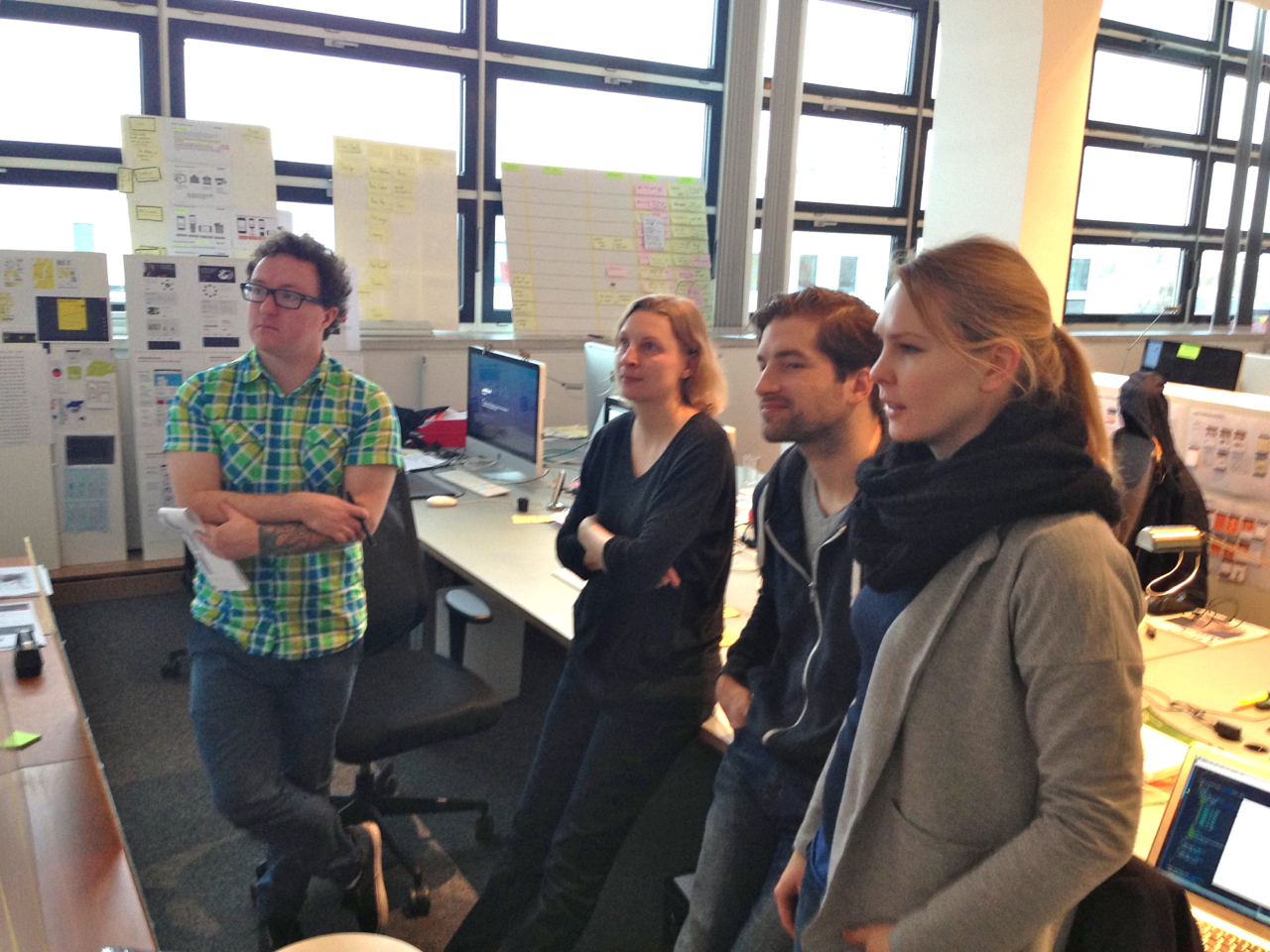 Discussing and making decisions as a team is vital to our work
Discussing and making decisions as a team is vital to our work
Trust and empower your team
For the past two years we have approached all our digital projects with agile frameworks, namely scrum, and the impact has been nothing short of spectacular: we not only create products of higher quality, manage complexity more easily and deliver results our clients actually need (not initially wanted), it also brings people together and gives them a lot of freedom on how to self-organise their work. This is what keeps me coming back each morning: I can focus on one project at a time and decisions are made by the team on the go, not in a concept phase at the start of the project by a few select people. It’s about empowering those with the most knowledge, as well as allowing them to interact directly with clients.
Honour to whom honour is due
That regularly means speaking up, presenting and discussing your work in front of colleagues and clients alike, right from day one of a new project. Doing so requires communication skills, but ensures that nothing is lost in translation and you get all the credit for your work. We also found that clients liked getting to know the team instead of merely interfacing with a project manager. Building digital products is a craft, as well as a group effort, therefore bringing our team and the client’s team closely together is key to great work in an agile environment.
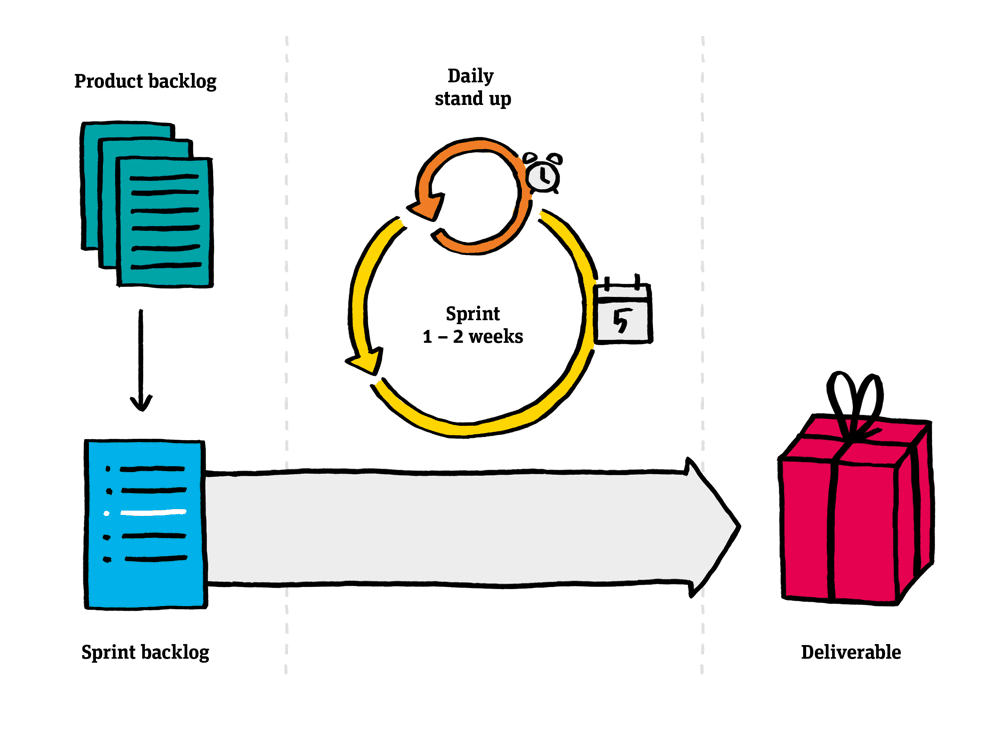
Projects are organized in sprints, usually lasting one or two weeks and starting with a planning to set fixed goals for the upcoming iteration. Then each day begins with a quick stand up meeting to decide on the most urgent tasks. The sprint cycle is concluded with a review of the achievements and a retrospective.
Scrum is not just about process …
… it’s also about work ethics. We want people who love what they do and see them grow. That’s why working at a sustainable pace is of prime importance and why we don’t do extra hours. Yep, that’s right! By involving our clients in the process we ensure realistic expectations regarding what gets done and when. We are partners, not suppliers and if you ask anyone at Edenspiekermann when they leave the office, you’ll hear between 5pm and 7pm, depending on when the day started. Nobody’s forced to stay longer … but obviously you can for the occasional beer or two.
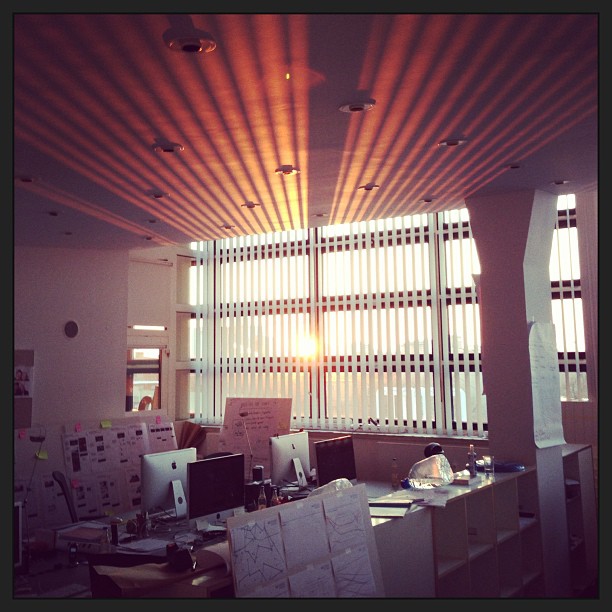 Our Berlin office … more impressions on worldc.am
Our Berlin office … more impressions on worldc.am
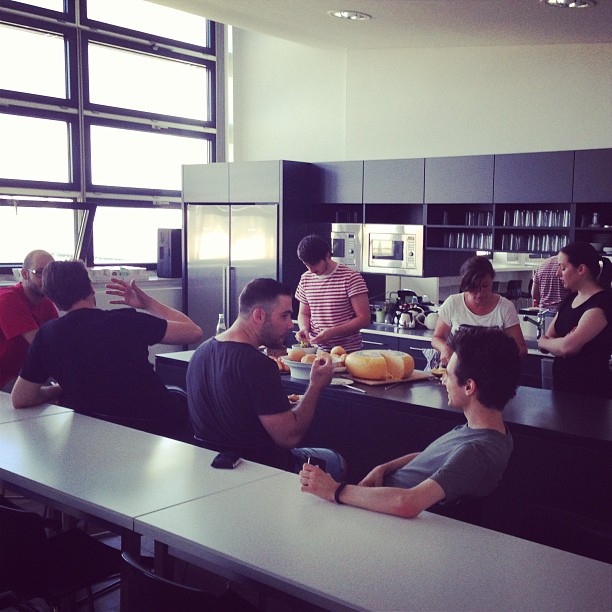 Having breakfast together
Having breakfast together
Death to the waterfall
Designing lots of static mockups at the start of a project has proven to make very little sense. Technical constraints, shifting goals and changing parameters will render them obsolete sooner or later anyway, so we try to keep initial designing as short as possible: It is helpful to set a tone for the project, but we jump into working code and continuous prototyping as soon as possible to verify design decisions on the spot, be it in the browser or on a device.
Always integrate, never separate
This paradigm shift has a few consequences: We don’t work with blind text, or use wireframes in schematic or fixed blueprint manner and most of our designers have basic coding skills. When given a closer look, all of these points are inevitable: Blind text and wireframes provide a false sense of security – you cannot design something without real content and extensive wireframing usually results in pain for everyone involved: hard to maintain, very little value. This is not to say we don’t sketch out ideas or create mockups when they’re needed – it’s often useful to roughly visualise your ideas when you’re working in a team. However, as a digital designer you cannot escape the source code, just as a carpenter can’t sidestep the wood. Coding is at the heart of everything digital – it defines what is possible and how a product feels. Therefore we expect you to be at least curious about coding yourself. Obviously this works the other way round as well: All our developers have a good understanding of interaction design and usually get involved in UI discussions.
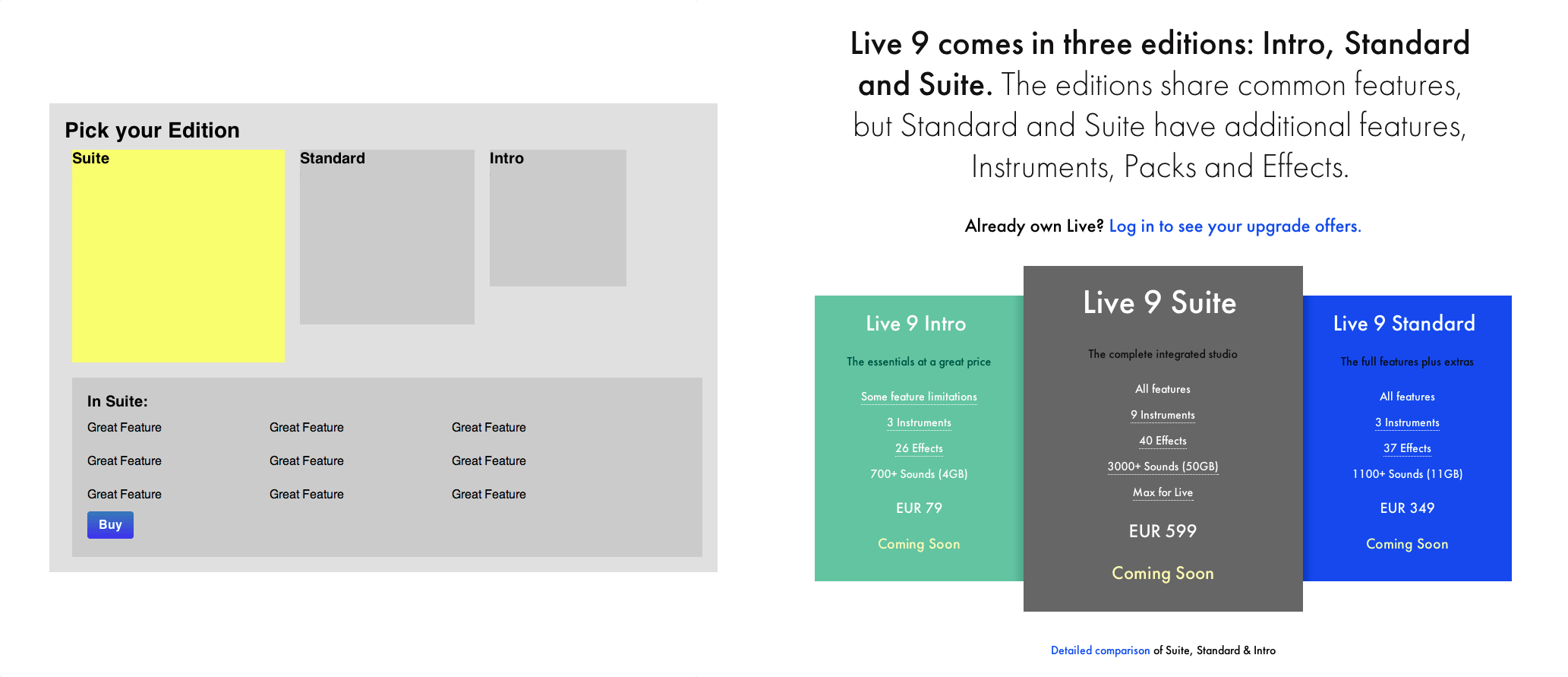
Prototyping in the browser: screenshots showing the Ableton website prototype on the left and the finished section on the right.
Stop designing pretty mockups, design to build
Being around developers has another benefit: Your designs are always meant to become actual products. We don’t design pie in the sky, we do the real thing: Help brands and startups create products which are useful, relevant and utilise cutting edge technology. All our websites are responsive by default (e.g. Ableton, RBMA Radio, Red Bull Music Academy, The Corner Berlin, Schweizer Illustrierte), we use modern technologies like Rails, Node, Sass, Backbone.js and when it comes to apps, we create products for iOS, Android, Windows Phone and even SmartTVs. On top of that we work with startups like GetYourGuide, and we even dive into product development, e.g. Screenfeeder. The range of stuff to work on is really quite broad.
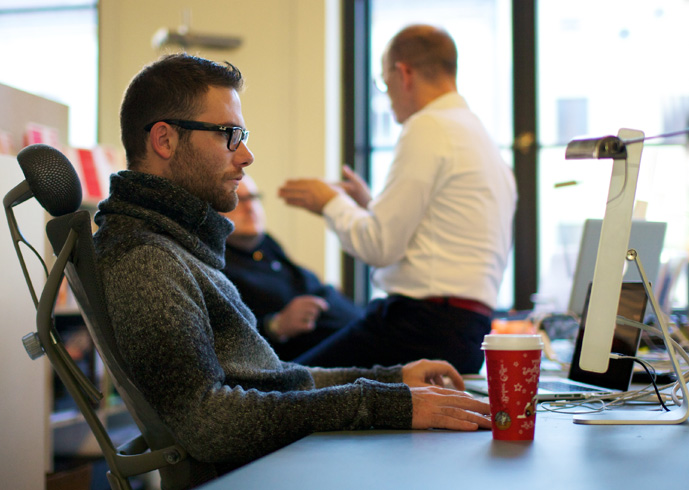

Let’s go down the rabbit hole together
If this post made you curious: We have open positions on all skill levels, from internships to the role of a creative director. Head over to our Somewhere page or drop us a line on Twitter; we can’t wait to talk to you! And just in case you are a developer, be it web front end, back end or iOS: You’re more than welcome as well! Get in touch. :)